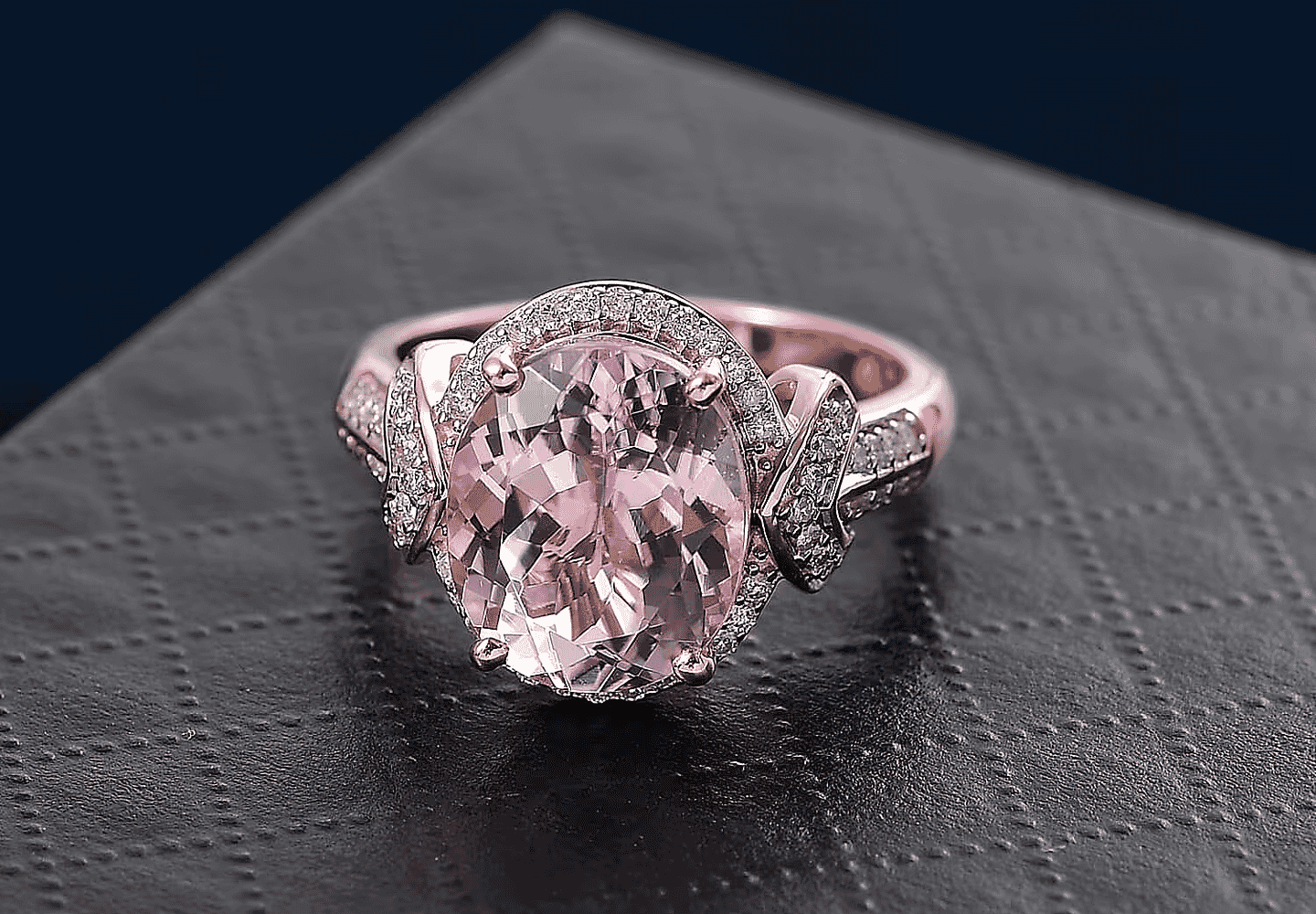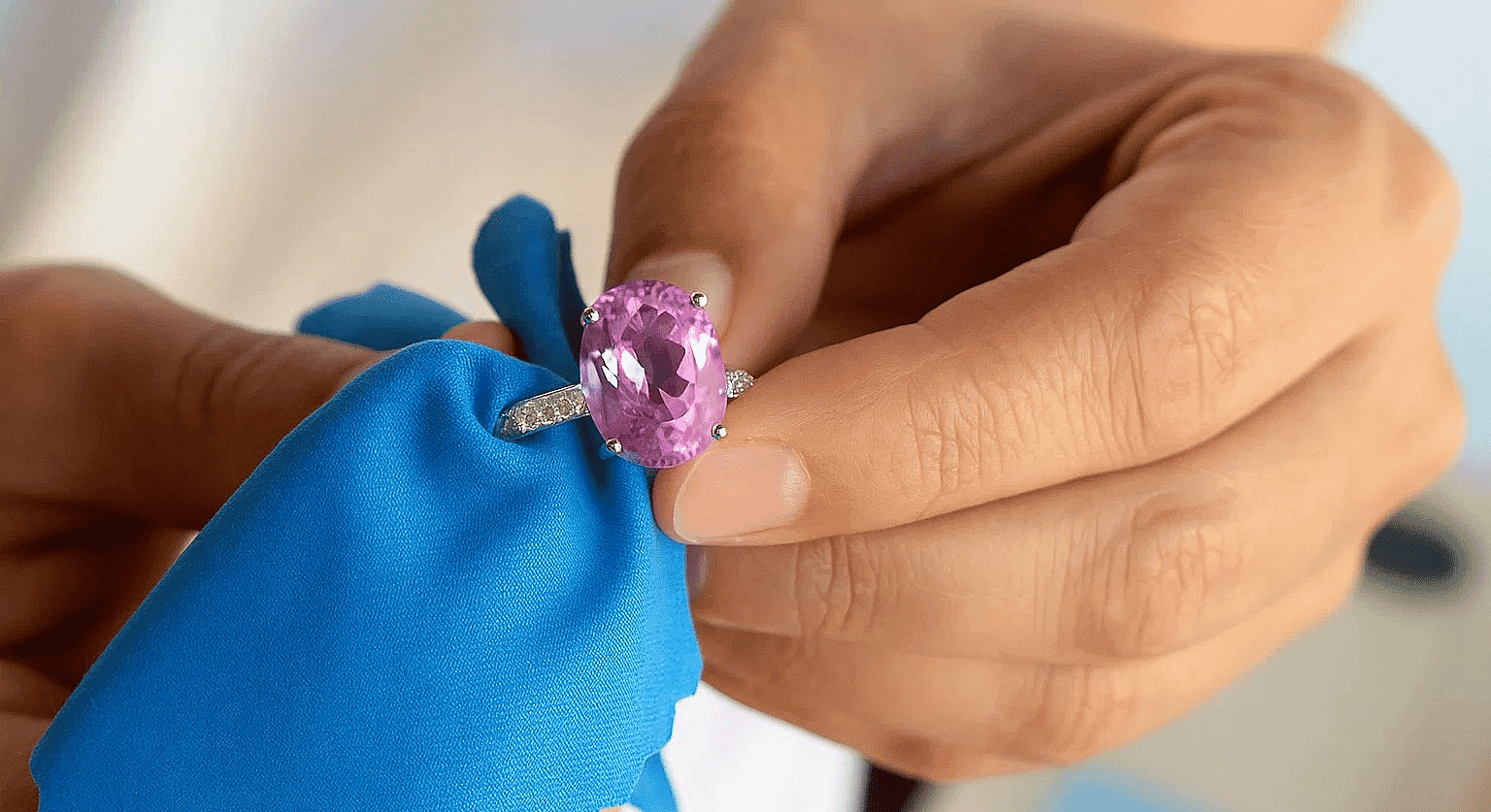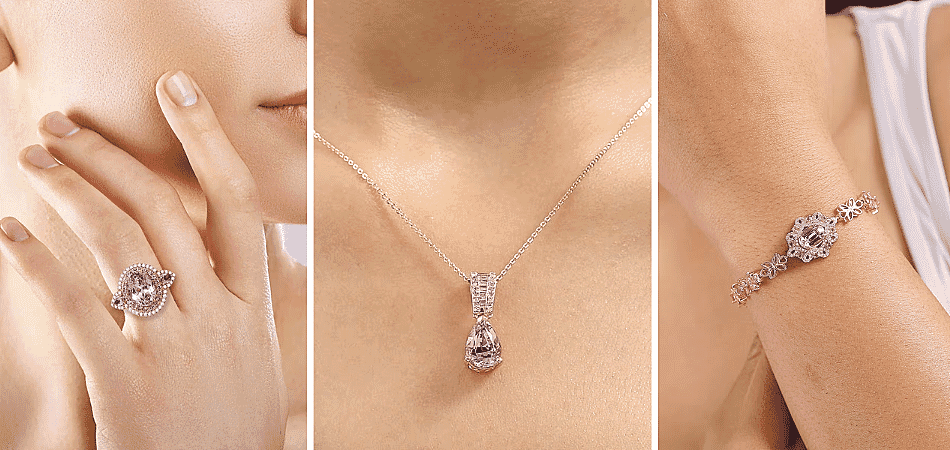
PATROKE KUNZITE GEMSTONE
Patroke Kunzite is a beautiful and rare gemstone from the spodumene mineral family. It is a pink to lilac-colored gemstone prized for its delicate and feminine hue. Kunzite was first discovered in California in 1902 and was named after George Frederick Kunz, a renowned gemologist. Its delicate beauty and pleochroism make it a favorite among collectors and jewelry enthusiasts alike.
VALUE
Determining Patroke Kunzite Value
The value of Patroke Kunzite primarily depends on its color. In addition, clarity, cut, and carat weight all factor into the value of a gem. These guidelines will help you choose the perfect Patroke Kunzite for your collection.
COLOR
This transparent gemstone dazzles in shades from soft rose pink to lilac bluish-purple, influenced by manganese and lighting. Darker tones, especially deep magenta, are the most valuable, while lighter pinks are more common. Collectors prize its intense pinks and purples, yet its pastel hues remain equally popular.
Clarity
Patroke Kunzite belongs to the Type I category in the GIA clarity grading system, known for its high transparency and low inclusion rate. Inclusions like cracks or cloudiness can lower its value, but growth tubes can enhance its beauty and uniqueness. Large, unsightly inclusions may require treatment or re-cutting to improve appearance and value.
Cut
Kunzite is difficult to cut due to its perfect cleavage, requiring lapidaries to carefully consider crystal structure and orientation. Precise angles, depth, and symmetry are essential for durability and beauty. Common shapes include oval, pear, emerald, round, cushion, and marquise. Step cuts and clean-lined shapes like octagons or cushions highlight its pleochroism and color saturation, demanding expert skill.
Carat
Kunzite is frequently found in larger carat sizes, and the value of the gemstone does increase significantly with size, particularly in fine specimens. Larger stones often display deeper, more vivid color, which enhances their overall beauty and desirability. Because of this, collectors and jewelry enthusiasts especially seek out kunzite in statement sizes, where its brilliance and pleochroism can be fully appreciated.
TREATMENT
Patroke Kunzite Treatment
Kunzite is often untreated, meaning it has not been subjected to artificial treatments to enhance its color or clarity. However, it is worth noting that, like many gemstones, kunzite can be heat treated or irradiated to improve its appearance. Heat treatment involves subjecting the gemstone to high temperatures, which can cause any impurities or inclusions to dissolve, resulting in a clearer, more transparent gemstone. In some cases, heat treatment can also intensify or change the color of the kunzite, resulting in a more desirable gemstone.
Storage
Caring for Kunzite
Kunzite ranks 6.5 to 7 on the Mohs scale of hardness, making it a relatively soft gemstone with two-plane cleavage. This means it is more prone to scratches, chips, and color fading when exposed to sunlight, earning it the title of an "evening stone." Proper care is essential to maintain its beauty:

- Gentle Cleaning
Clean kunzite jewelry with lukewarm water and mild dish soap using a soft brush, such as a toothbrush. Rinse thoroughly and dry with a soft, lint-free cloth. Avoid ultrasonic and steam cleaners, as they can damage or fracture the stone.
- Safe Storage
Store kunzite jewelry separately in a soft, padded pouch or jewelry box. Keeping it away from other gemstones prevents scratches, chips, and accidental damage. Store in a cool, dry place away from direct sunlight.
- Heat & Chemical Protection
Avoid exposing kunzite to extreme heat, sudden temperature changes, or chemicals like bleach and acids. Such exposure can damage the stone’s surface, reduce its luster, or even cause cracks and fractures.
- Durability Awareness
Kunzite is more delicate than many other gemstones due to its cleavage and sensitivity to sunlight. Regularly inspect the jewelry setting to ensure the stone remains secure and protected during wear.
IDEAL CHOICE
Who Can Wear Kunzite?
Regardless of the birthstone or zodiac sign, kunzite is a versatile stone that anyone can wear. This stone is often used in fine jewelry, including rings, earrings, pendants, and bracelets. In addition, the delicate pastel color of kunzite makes it a popular choice for feminine and romantic jewelry styles, such as vintage-inspired pieces or Art Deco designs.
Kunzite is a gemstone that can be matched with several types of metals, such as white gold, yellow gold, rose gold, and platinum. It also pairs well with other gemstones like diamonds, sapphires, and pearls.
When it comes to fashion and color palettes, kunzite works best with soft and neutral shades, such as pastel pinks, lavenders, and grays. It can also complement brighter colors like coral, peach, and turquoise. Kunzite is an excellent stone to wear in the spring and summer when light and airy fashion styles are in vogue.
While no trends are associated with kunzite, it has recently become a popular choice for engagement rings. Kunzite engagement rings are a unique and romantic alternative to traditional diamond rings and can be paired with a variety of wedding band styles.

Difference
How Does Kunzite Compare to Other Pink Stones?
Kunzite's pink color falls in the range of light to medium-light pink hues. It is similar in color to other pink gemstones, such as pink sapphire, pink tourmaline, and morganite. However, there are some differences between these gemstones. Compared to pink sapphire, kunzite is much lighter in tone and has a more delicate appearance. Pink sapphire is typically a darker and more saturated pink color. Pink tourmaline is available in a range of shades, from a light pink hue to a vibrant fuchsia color and is typically more intensely colored than kunzite. On the other hand, morganite is typically a more peachy-pink color and can range from light to medium in tone. One unique feature of kunzite is its pleochroism, which can exhibit different colors when viewed from different angles. This can give kunzite a special, multi-dimensional appearance that is not found in other pink gemstones.
Is Patroke Kunzite a Birthstone?
Kunzite is not recognized as a traditional birthstone in the official birthstone lists. However, it is often appreciated as a modern or alternative birthstone for February, making it a unique choice for those seeking something different from the traditional amethyst. This gentle pink-to-lilac gemstone is associated with emotions of love, compassion, and inner peace, qualities that beautifully align with the romantic aura of February. Its calming energy is believed to help soothe stress, encourage emotional healing, and open the heart to unconditional love.
SIGNIFICANCE
What Does Patroke Kunzite Mean?
Kunzite is a crystal that holds spiritual significance, as it can liberate us from past traumas and fears and can help us open our hearts to new forms of love. In addition, this gentle crystal has a soothing energy that can assist in releasing blocked energies and making us more receptive and sensitive to our emotions. In addition to its spiritual properties, kunzite has protective qualities that can safeguard us from negative energies and entities. It is believed to hold the power to bring blessings, prosperity, and good fortune in a person's life. Its soft hues represent purity and innocence and can be considered a living entity that can promote transformation and rejuvenation. This gentle and calming stone alleviates stress and tension, imparting peaceful and soothing energy that can mend a broken heart.
Simply looking at kunzite's surface or holding it in your hand can be enough to alleviate daily stress, relax muscles, and calm nerves, dispelling feelings of anger, rage, or fear. It can also activate the spiritual potential of an individual, leading to enlightenment and expanding consciousness. As a cleansing crystal, kunzite can purify negative energies from the aura. Kunzite is also beneficial in achieving natural hormone balance in healing. The presence of lithium is one reason for its therapeutic properties.
Patroke Kunzite Facts
MOHS HARDNESS
6.5 to 7
COLOR
Known for its "rose" pink to mesmerizing "lilac" shades of bluish-purple.
TREATMENT
Heat treated or irradiated to improve the color and clarity
ORIGINS
Sourced from Kunar Valley of Afghanistan.
